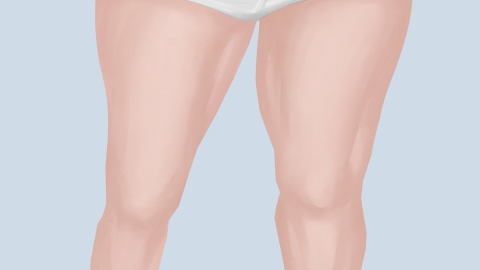How to lose weight when you have thick legs and a large buttocks
Thick thighs and a large buttocks can generally be improved through exercise training, dietary control, avoiding prolonged sitting, appropriate massage, and ensuring sufficient sleep.

1. Exercise training: Perform strength training exercises such as squats, lunges, and glute bridges to strengthen the muscles of the buttocks and legs and increase basal metabolism. Combine with aerobic exercises like rope skipping and stair climbing, each session lasting more than 30 minutes, to promote overall fat burning, improve the condition of thick thighs and a large buttocks, and shape a toned silhouette.
2. Dietary control: Reduce intake of high-calorie and high-fat foods such as fried foods and desserts. Increase the proportion of vegetables, fruits, and whole grains in your diet, and consume more protein-rich foods like chicken breast, fish, and shrimp. Control the calorie intake per meal, ensure balanced nutrition, and avoid excess calories being converted into fat deposits in the buttock and thigh areas.
3. Avoid prolonged sitting: Sitting for extended periods can lead to poor blood circulation in the buttocks and legs, promoting fat accumulation. Frequently stand up and move around during breaks at work or study, and perform stretching exercises to improve blood circulation. When standing, maintain an upright posture with your chest out and abdomen drawn in to engage and strengthen the muscles of the buttocks and legs, improving posture and reducing fat accumulation.
4. Appropriate massage: Massage your legs and buttocks daily using a massage ball or your hands to promote blood circulation, relieve muscle tension, and prevent muscular thickening of the legs. Perform upward massage strokes from the lower body upwards, using slimming creams if desired, to help relax muscles, accelerate fat metabolism, and shape elegant leg and buttock contours.
5. Ensure sufficient sleep: Lack of sleep affects metabolism, leading to hormonal imbalances and fat accumulation. Ensure 7-8 hours of quality sleep daily to support bodily recovery and metabolic regulation, promote fat breakdown, reduce fat accumulation in the thigh and buttock areas, and aid in weight loss.
Weight loss is a gradual process that requires finding a healthy lifestyle suited to your individual needs and maintaining it consistently. If necessary, consult a nutritionist or fitness trainer for professional advice to develop a personalized weight loss plan.






